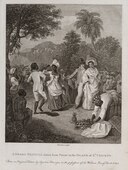
Size of this JPG preview of this TIF file:
473 √ó 599 pixels. Other resolutions:
189 √ó 240 pixels |
379 √ó 480 pixels |
606 √ó 768 pixels |
808 √ó 1,024 pixels |
1,617 √ó 2,048 pixels |
3,000 √ó 3,800 pixels.
Original file (3,000 √ó 3,800 pixels, file size: 32.65 MB, MIME type: image/tiff)
File history
Click on a date/time to view the file as it appeared at that time.
| Date/Time | Thumbnail | Dimensions | User | Comment | |
|---|---|---|---|---|---|
| current | 22:01, 22 September 2017 |
 | 3,000 × 3,800 (32.65 MB) | SteinsplitterBot | Bot: Image rotated by 270° |
| 01:33, 20 September 2017 |
 | 3,800 × 3,000 (32.62 MB) | Fæ | Royal Museums Greenwich Fine art (1800), http://collections.rmg.co.uk/collections/objects/254623 #2215 |
File usage
The following pages on the English Wikipedia use this file (pages on other projects are not listed):
Metadata

Size of this JPG preview of this TIF file:
473 √ó 599 pixels. Other resolutions:
189 √ó 240 pixels |
379 √ó 480 pixels |
606 √ó 768 pixels |
808 √ó 1,024 pixels |
1,617 √ó 2,048 pixels |
3,000 √ó 3,800 pixels.
Original file (3,000 √ó 3,800 pixels, file size: 32.65 MB, MIME type: image/tiff)
File history
Click on a date/time to view the file as it appeared at that time.
| Date/Time | Thumbnail | Dimensions | User | Comment | |
|---|---|---|---|---|---|
| current | 22:01, 22 September 2017 |
 | 3,000 × 3,800 (32.65 MB) | SteinsplitterBot | Bot: Image rotated by 270° |
| 01:33, 20 September 2017 |
 | 3,800 × 3,000 (32.62 MB) | Fæ | Royal Museums Greenwich Fine art (1800), http://collections.rmg.co.uk/collections/objects/254623 #2215 |
File usage
The following pages on the English Wikipedia use this file (pages on other projects are not listed):

